Last updated on May 3rd, 2023
The humble ant is the most numerous group of insect on the face of the planet and can thank their success and numbers due to cooperative living. Learning about ants is a fun hobby. Their brains are very tiny, possibly containing fewer than a few hundred thousand cells, and yet contain all the information necessary to do everything that they do. Ants are not learners but pretty much are little robots with everything built into their minds from birth. Their entire nervous system matters, with their antennae playing a crucial role in locating food, obstacles, and even enemies. With these facts about ants let us learn about their origin, anatomy, behavior, life cycle, colonies, and more.
Interesting facts about ants
Ant Origins
1. Etymology
The word “ant” is a simplification of the old Germanic term “ǣmaitjōn”, which means “the biter”. Truly, the struggle is real against these insects since ancient times.
2. Ant Sting
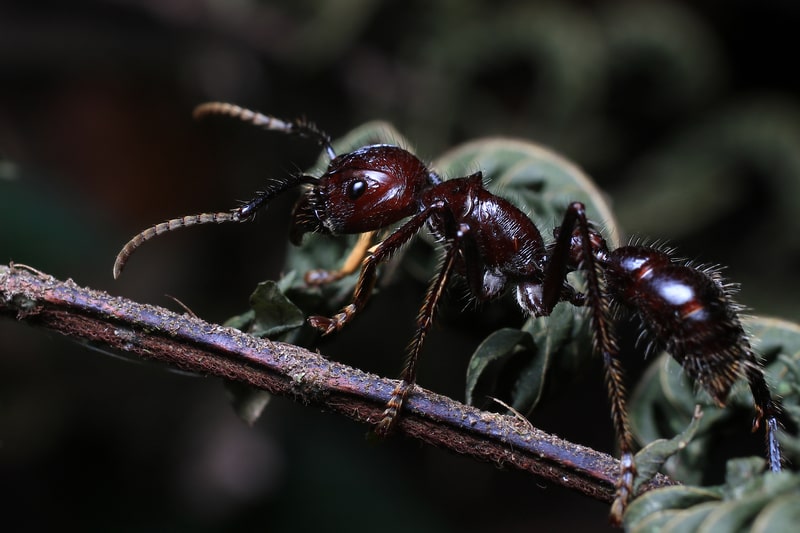
Bites can hurt, but stings are worse. Ant venom can induce a burning sensation, itching, and a pimple-like bump. It may also trigger allergic reactions like hives, dizziness, and vomiting.
3. Number of Species
Over 13,800 ant species have been identified so far, but scientists say that there could be as much as 22,000 species around the world.
4. Ants and Dinosaurs
Ants lived side-by-side with the dinosaurs. In 2016, paleontologists in Myanmar found a feathered dinosaur tail with ancient ants preserved in amber. The fossil is 99 million years old.
5. Prehistoric Ant
Another amber specimen shows a prehistoric hell ant grasping its insect prey. Hell ants look as scary as they sound, with menacing horns and a scythe-shaped jaw.
6. Ants and Termites

They may look similar, but they belong to different orders. Termites are genetically closer to mantis and crickets. Meanwhile, ants are closer to bees and wasps.
7. DNA Dating
According to Harvard DNA studies, ants emerged 140 to 168 million years ago. They then diversified 100 million years ago along with the rise of flowering plants.
8. Terrestrial Animal Biomass
Ants may be light but their numbers are astronomical. If you gathered all land animals and weighed each kind, you’ll find that ants comprise 15-25% of the total biomass.
9. Ant Estimate
Biologist E.O. Wilson estimates the total number of living ants between 1 and 10 quadrillion. That’s roughly 1 million ants per human. If this is accurate, then the total biomass of ants and humans are approximately equal.
10. Velvet Ants
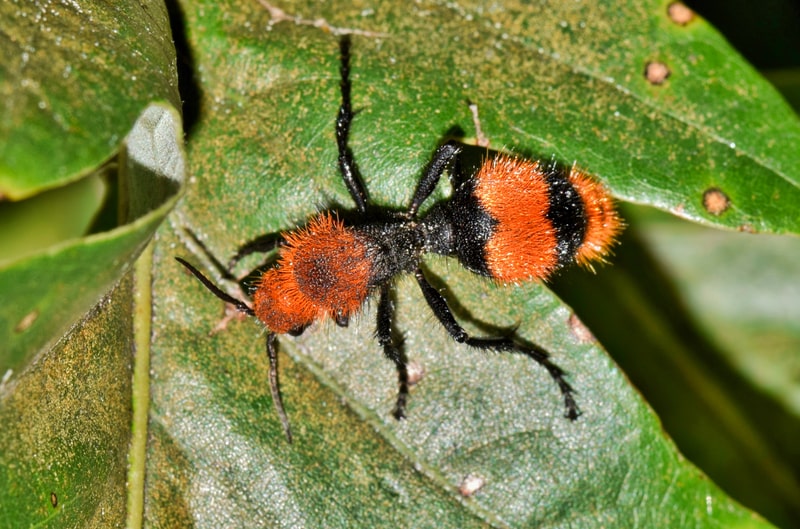
Velvet ants are big and black, often with orange hair at the top. Don’t be fooled by their name and their appearance. These are actually female wingless wasps.
Ant Anatomy
11. Exoskeleton
Ant exoskeleton is a hard shell that protects against injuries and prevents water loss. It is peppered with small openings for surrounding oxygen to get inside – no breathing necessary!
12. Circulation
Ants have no heart or blood vessels. Instead, they have one long, perforated tube called the dorsal aorta. It pumps clear “blood” to the brain and other parts of the body.
13. Size
Adult ants are typically between 0.75 to 52 millimeters. One exception is the queen of Titanomyrma giganteum. It can grow to a length of 6cm and a wingspan of 15 cm.
14. Color
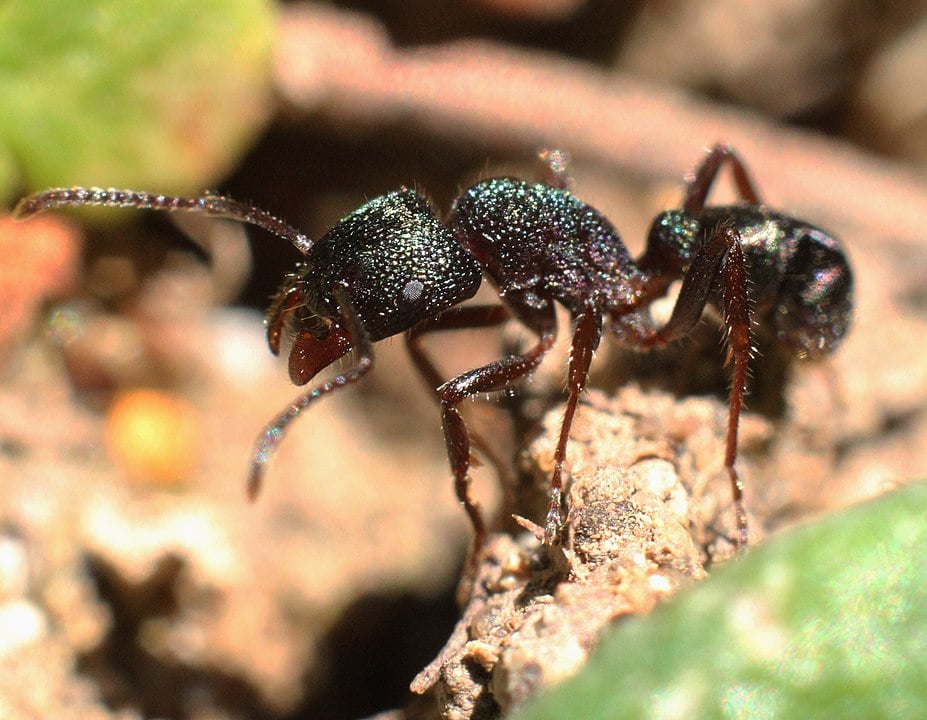
Most ants are black or a shade of red. A few of them are green with a metallic sheen, such as the green-headed ant of Australia.
15. Vision
Most ants have blurry vision, but their two compound eyes are great for motion detection. Queens and males have three extra light-sensing eyes on the forehead.
16. Metapleural Glands
Ants make their own medicine. They secrete antibiotic fluid that prevents fungus and bacteria from growing on their exoskeleton and in their nests.
17. Elbowed Antennae
The two antennae are all-in-one sensors. These can detect vibrations, air currents, chemicals, and touch. They are great for both short and long-range communications.
18. Mandibles
Ants have strong jaws to carry food, defend the colony, build nests, manipulate objects, and torment hapless humans.
19. Gaster
The gaster is the large bottom section of ants. It houses the reproductive system. Since workers don’t mate, some species have turned this into stings for defense.
20. Brain
Ants may be small, but they have 250,000 brain cells. They are widely considered as the smartest insect because of their complex social structure, quick adaptation, and remarkable skills.
Life Cycle
21. Who Runs the Colonies? Girls!
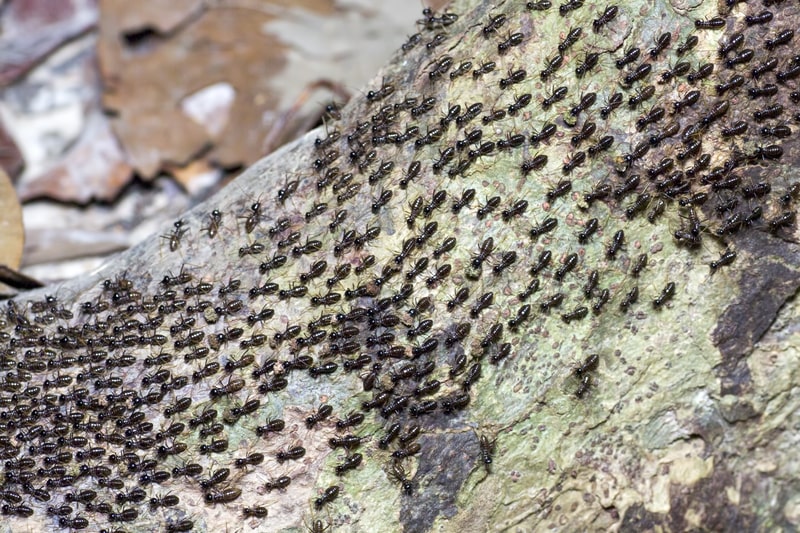
Almost every ant that you see is a female. That includes all the workers, the soldiers, and of course, the queens.
22. Made to Procreate
The sole purpose of males is to mate once with a queen, so the colony simply feeds them until the main event, and then they fade away.
23. Nuptial Flight
It’s the ant version of a group date. After rain, thousands of winged ants from different nests fly simultaneously to mate, sometimes traveling long distances to meet up. In 2017, they flew all the way to a Wimbledon court and distracted the tennis players.
24. Feasting on Hot Wings
Queens and males are the only winged ants, since they need to fly for the aerial mating ritual. After flight, the hungry ants rip the wings and eat them.
25. Lifetime Supply
When mating, male ants transfer sperm cells into the queen’s receptacle for storage. This lifetime supply allows queens to focus on laying eggs and forget men forever.
26. Ant Eggs
Queen ants lay eggs like it’s their job. They can produce 300,000 eggs in a few days. The sticky surface lets workers carry several eggs at a time, which is handy during nest invasions.
27. Larva
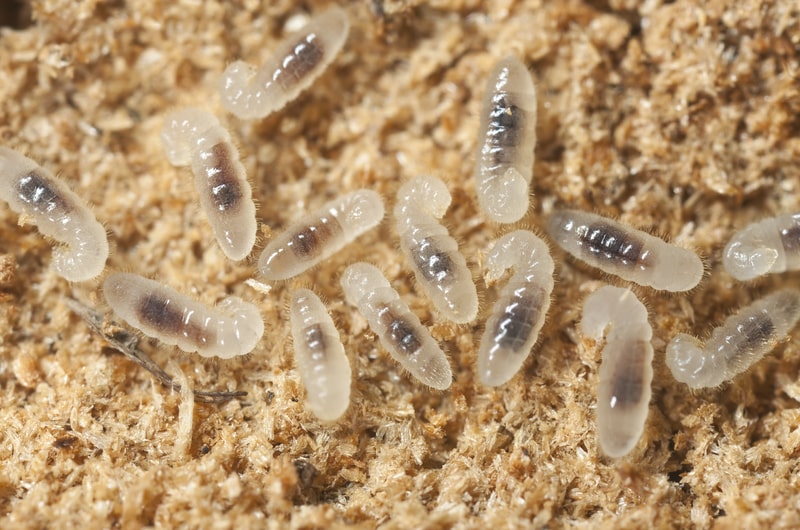
Eggs turn into worm-like larva with a head and mouth. Workers feed them in place by regurgitating liquid. Late-stage larva may eat seeds, bits of prey, and unfertilized eggs.
28. Pupa
Larva turn into pupa, which may or may not be wrapped in a cocoon. They rest and reorganize, waking up once fully grown. Pupa starts out white but darkens over time.
29. Role Determination
Hormones, nutrition, and genes may influence an ant’s role in the colony: worker, queen, or male. Small genetic differences can also determine whether a colony will have one or multiple queens, sometimes reaching hundreds.
30. Lifespan
Metamorphosis from egg to adulthood takes weeks or months. After that, adult ants live longer than other insects, with workers lasting 1-3 years and queens reaching up to 30 years.
Ant Colonies
31. Global Reach
You can find ant colonies in nearly all continents, except for one: Antarctica. Quite ironic, given the name.
32. Colony Size
A colony of ants can have just a few dozen members, although some can have millions. Multiple colonies may form super colonies, with billions of workers across thousands of miles.
33. Superorganism
Colonies function like a single superorganism with the multitude working together to survive. They process information and solve difficult problems as a group, such as nest site selection.
34. Changing Jobs
Jobs are not fixed. Young workers tend to care for the queen, then move on to farther to nest maintenance and security. The oldest workers take on the high-risk job of gathering food.
35. Necessary for Survival
Without a queen, workers won’t have any replacements. The colony will slowly fall apart and disappear. That’s why everyone is keen on protecting her.
36. Colonial Rebellions
It’s the ultimate girl fight. In colonies with multiple queens, battles may break out among workers with different loyalties. Sensing an attack, a queen may reduce egg production to conserve energy and defend herself.
37. Colonial Wars
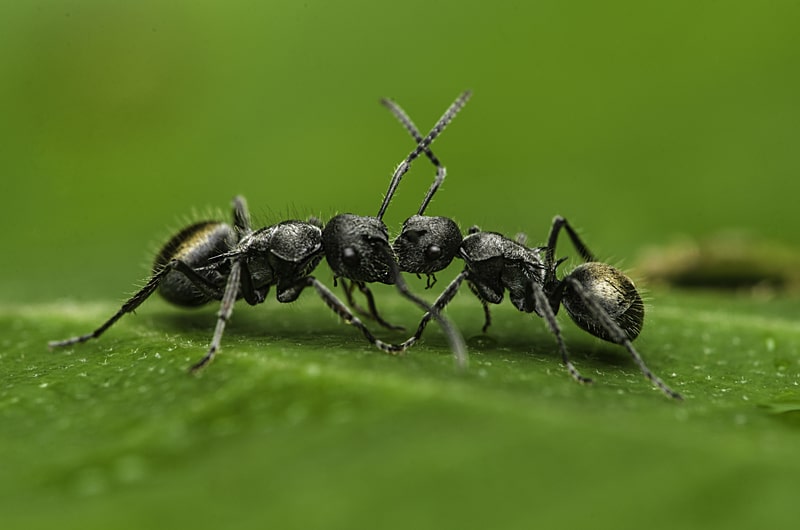
Ants are loyal to their colony, but may be hostile towards others. Competition for food can lead to aggression, so they establish territorial boundaries to prevent wars.
38. Group Foraging
Ants are omnivores. Most species are relatively harmless, feeding on dead animals, rotting fruits, or household leftovers. Predatory ants can overwhelm small animals with painful sting.
39. Living Storage
Some large young worker ants may act as living food storage vessels. They are fed until their gasters are bloated. If these are removed from the colony, then other ants will grow bigger to take their place.
40. Regular Schedule
Ants are creatures of habit. They stick to regular work shifts, sleep times, and eating schedules. It’s fair to say that colonies run like highly efficient mega corporations.
Ant Behavior
41. Pheromone Trail
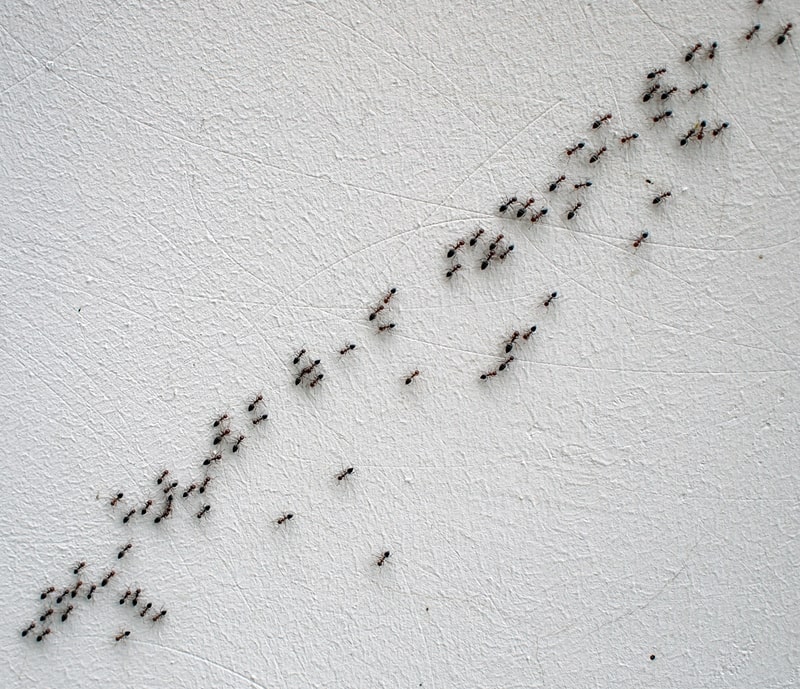
When foraging, ants leave a pheromone trail to find their way back. It also helps other workers stay on course. That’s why you see them sticking to a line instead of running all over a wall.
42. Slave-making Ants
Slave raiding is limited to humans? Think again. Some ants steal the brood of another ant species to increase their colony’s workforce. Alternative names include pirate ants and kidnapper ants.
43. Inquilinism
Inquiline ants are also social parasites, but not through slavery. The queen enters a host colony, lays eggs, and remains there for a while. Perks include free food and childcare.
44. Fungus-farming Ants
Humans aren’t the first farmers on earth. Attine ants have been farming fungi in South America 60 million years before we came along.
45. Zombie Ants
Ants infected by the parasitic fungus “cordyceps” lose control of their mind, climb plants, clamp themselves, and die on the spot. After a while, toxic spores will bloom from the head and drift down to make more zombies.
46. Ant Repellents
You can mask scent trails with strong odors from coffee, pepper, vinegar, citrus, and the like. These will confuse the ants and prevent them from returning to their nest.
47. Strength
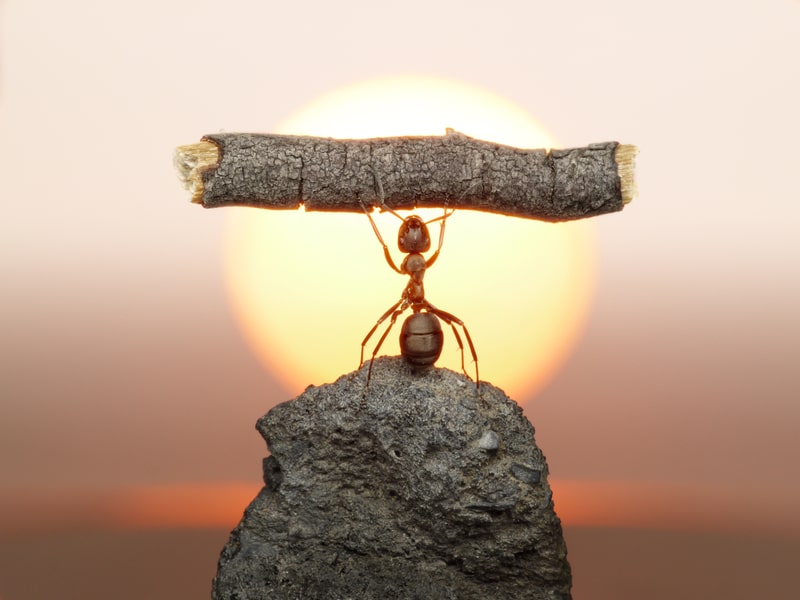
Ants can support 5,000x their body weight thanks to their light body, strong neck, and durable exoskeleton. That’s like a 200 lb person supporting 1,000,000 lbs. Incredible.
48. Underwater Survival
Ants can survive floods by floating on the surface. If they go underwater, they can wait for water to dry and breathe again through their exoskeleton.
49. Treating the Wounded
Some ants take their wounded soldiers back to the nest for treatment, usually by licking the wounds. This may reduce the risk of infection thanks to antimicrobial enzymes.
50. Military Strategies
Soldier ants are organized into platoons for combat. They also have lookouts who warn the colony about threats, allowing workers to hide the larva and protect the queen. Other soldiers rush to help where the signal originated.
Ants and Humans
51. Natural Pest Control
Wary about chemical pesticides? Go natural. Chinese farmers have been using weaver ants since 304BC to keep insects away from their crops.
52. Soil Aeration
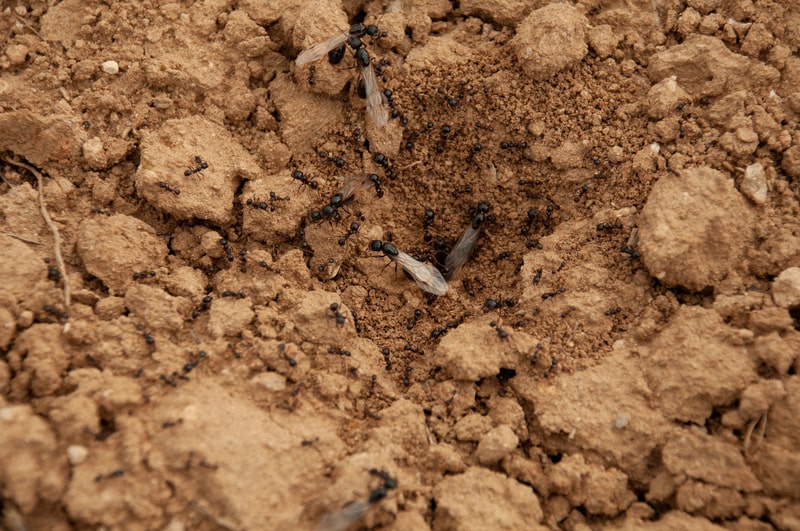
Manually aerating soil is hard work. Fortunately, ants often do it for us by creating underground tunnels. These let air and water penetrate more deeply.
53. Soil Conditioning
Worker ants take loads of organic material into the ground. Some might decompose before they can be eaten. The result: more soil nutrients and better texture.
54. Surgical Sutures
Need to close wounds in the wild? Let army ants lock the flesh with their mandibles, cut the body, and leave the head. It’s an ancient strategy in Africa and South America.
55. Ant as Food
Care for some insect caviar? It’s a popular dish in Mexico called escamoles with ant eggs mixed in. Meanwhile, Colombians roast ants and Thais make salads out of ant larvae.
56. Ant Robots
Robots are often inspired by animals. MIT engineers are creating low-cost ant robots that can be operated as a team, solve navigation puzzles, and achieve common goals.
. . . continue reading on the next page
